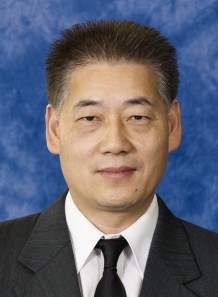Organometallic Reactions without Using Organometallic Reagents
January 30, 2020
Dr. Chao-Jun Li
The efficient making of new molecules is central to any new product in the pharmaceutical, materials science, microelectronics, and biotech industries. Exploration of new chemical reactivities towards a sustainable future has been a long-term objective of our laboratory. We have explored various unconventional chemical reactivities that can potentially simplify synthesis, decrease overall waste and maximize resource utilization. Organometallic reagents (R-M-X) play the central role in modern chemical synthesis. Prominent examples include the nucleophilic addition to carbonyl compounds (represented by the 1912 Nobel Prize in Chemistry), the nucleophilic conjugate additions of organocopper reagents, and various transition-metal mediated and catalyzed cross-coupling reactions with aryl halides (represented by the 2010 Nobel Prize in Chemistry). In spite of the enormous success of classical organometallic reagents, several limitations are intrinsically associated with their generation and applications: a) non-natural organic halides as feedstock; b) stoichiometric active metals as mediators have to be pre-synthesized often from organic halides; and c) the lack of tolerance towards water and various common functional groups in naturally occurring compounds. All these features will lead to extra synthetic steps in chemical synthesis and generations of metal, halides, and solvents wastes, increasing cost and lowering efficiency to convert biomasses.
Using transition-metal catalysis, we recently developed a strategy to use hydrazones as widely applicable surrogates of classical organometallic reagents. Contrary to the classical organometallic reagents, such new organometallic-reagent-surrogates (OMRS) exhibit some distinctive features: using a catalytic amount of metal, circumventing reagents, having great water and functional-group tolerance, and releasing H2 and nitrogen as simple and innocuous waste.
A wide range of classical organometallic reactions have been accomplished by this alternative protocol: including Grignard-type reactions of carbonyls and imines, conjugate additions, Negishi-type reaction, Trost-Tsuji reaction, Ullman-type reactions, Heck-type reactions, olefination reaction, hydroalkylation of olefins, trifluoromethylation and others.
Bio
Dr. Chao-Jun Li’s research is aimed at finding new ways to address the problems caused by extensive use of toxic solvents such as benzene and halogenated hydrocarbons. As the Canada Research Chair in Green Chemistry, Dr. Li is working primarily on the production of new molecules. His research has implications for the disciplines of biology and pharmacology, the field of environmental research, and it forms the basis for important contributions to the synthesis of new drugs and advanced (polymeric) materials.
